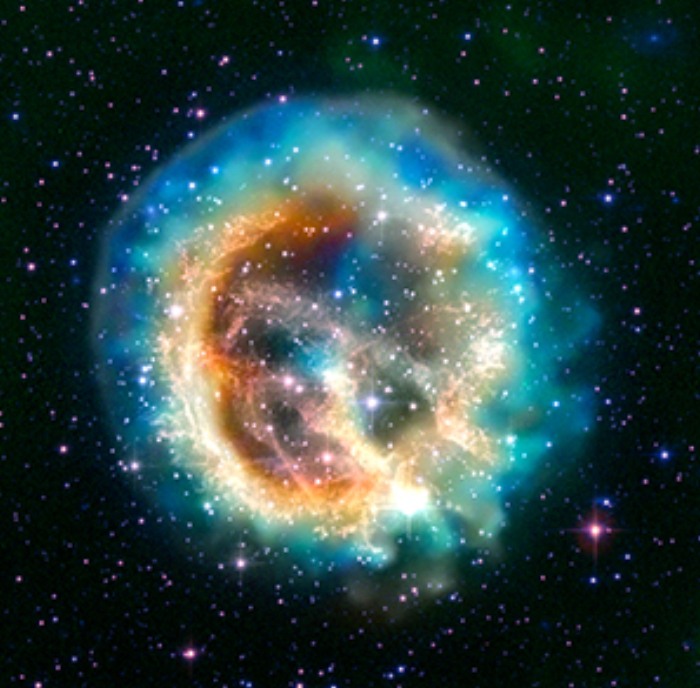
 Credit: X-ray (NASA/CXC/MIT/D.Dewey et al. & NASA/CXC/SAO/J.DePasquale); Optical (NASA/STScI)
Credit: X-ray (NASA/CXC/MIT/D.Dewey et al. & NASA/CXC/SAO/J.DePasquale); Optical (NASA/STScI)
Forwards and Backwards
Stellar explosions are complex. In a galaxy close, close by (the Small Magellanic Cloud, to be exact), a massive star exploded about 10 centuries ago and sent debris outward into interstellar space. This outwardly moving debris collided with the gas and dust around it, creating a high temperature shock wave. An additional shock wave formed, moving backwards towards the source of the explosion. The image above shows this complex interaction in fine detail. This image is a composite X-ray image from the Chandra X-ray Observatory plus an optical image from the Hubble Space Telescope. In the image above, the lowest-energy X-rays are colored orange, the intermediate-energy X-rays are cyan, and the highest-energy X-rays are blue. The blue X-rays show the material in the "forward shock", while the lower-energy orange emission shows the material heated by the "reverse shock". The optical image in red, green and blue shows cooler, higher density material in the remnant along with foreground stars in the field.
Published: August 10, 2009
<
HEA Dictionary ● Archive
● Search HEAPOW
● Other Languages
● HEAPOW on Facebook
● Download all Images
● Education ● HEAD
>
Each week the HEASARC
brings you new, exciting and beautiful images from X-ray and Gamma ray
astronomy. Check back each week and be sure to check out the HEAPOW archive!
Page Author: Dr. Michael F. Corcoran
Last modified Monday, 26-Feb-2024 17:45:18 EST


